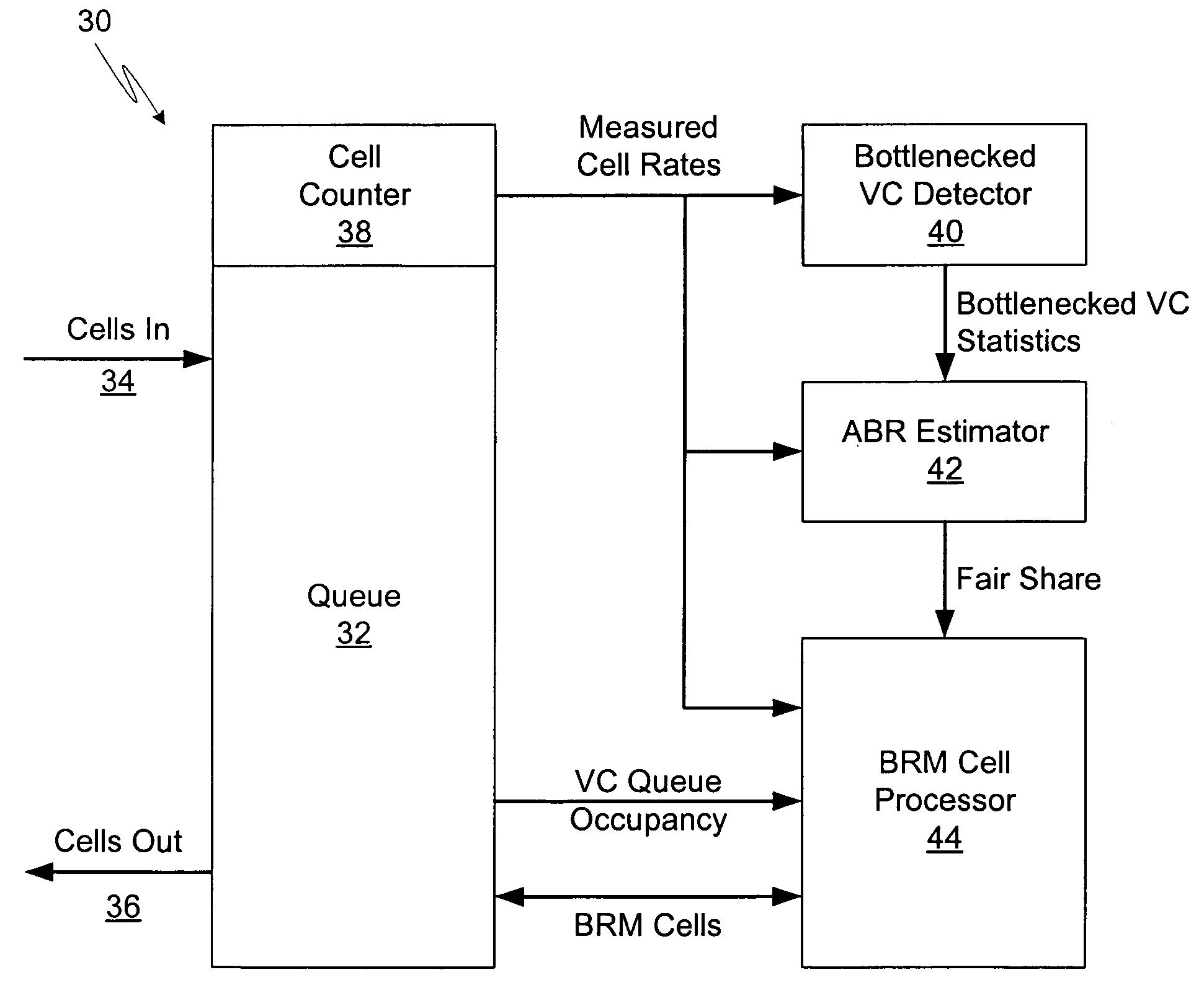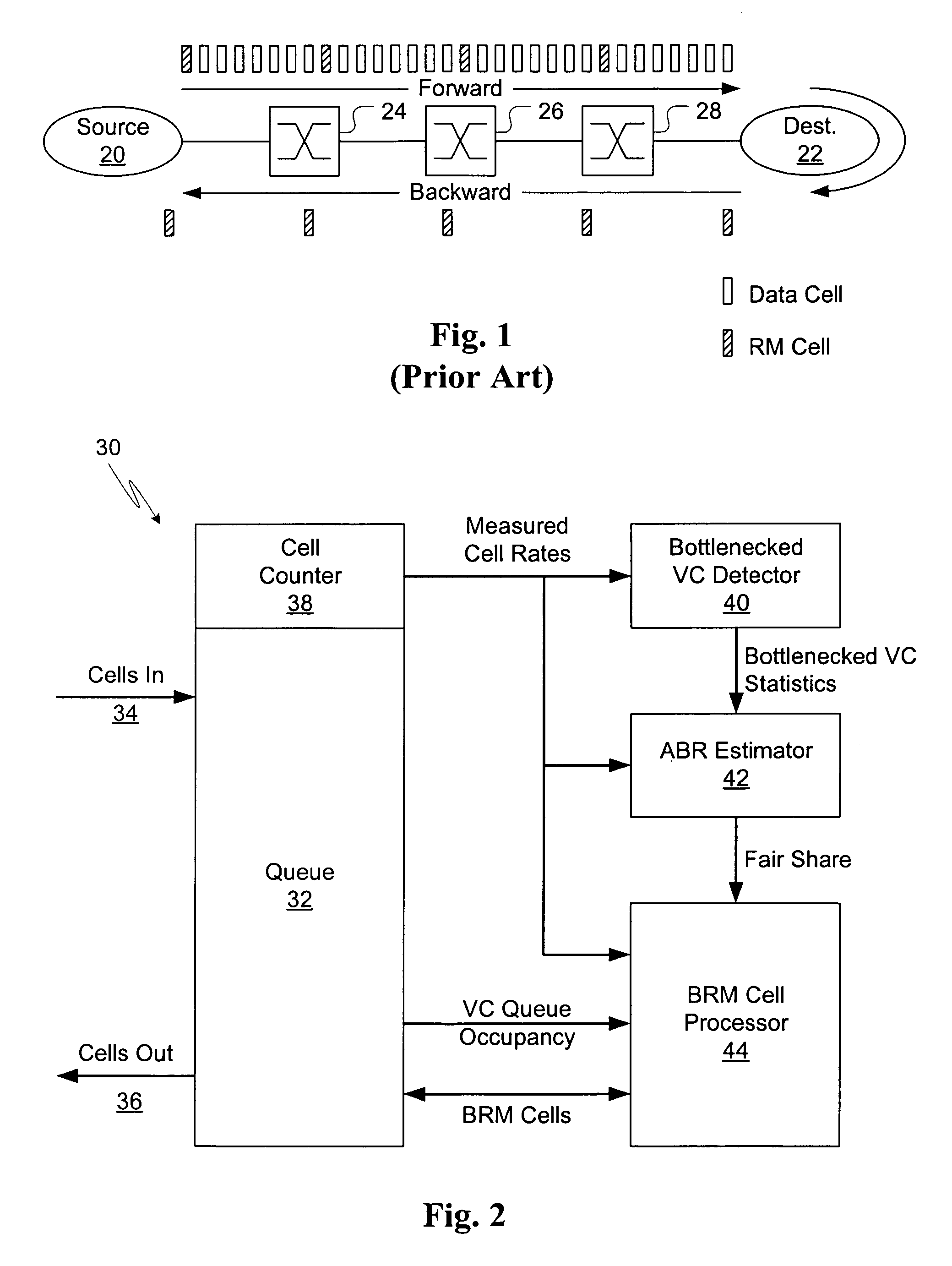Bandwidth allocation for ATM available bit rate service
a bit rate service and bandwidth allocation technology, applied in data switching networks, frequency-division multiplexes, instruments, etc., can solve the problems of slow convergence to max-min fairness, underestimate the true, slow convergence toward a fair solution, etc., to minimize queueing delay and maximize throughput
- Summary
- Abstract
- Description
- Claims
- Application Information
AI Technical Summary
Benefits of technology
Problems solved by technology
Method used
Image
Examples
Embodiment Construction
[0025]Several terms in this disclosure have defined meanings. Although a source can in practice have multiple parallel VCs open through a switch, in the following description, unless identified otherwise, each “source” is assumed to send cells over a single VC, and is thus identified with a single VC. A “rate-controlled source” is a source that responds to rate information fed back to it from other elements in its VC. An “unspecified bit rate source”, on the other hand, does not rely on such rate-controlling information.
[0026]Referring to FIG. 1, an ATM connection between a source and destination is shown in order to illustrate the ABR flow-control model. Source 20 sends cells to destination 22 at its allowed rate, the stream of cells passing through ATM switches 24, 26, and 28. At specified intervals, ABR source 20 must insert Resource Management (RM) cells into its data stream. The RM cells pass through ATM switches 24, 26, and 28, and are “turned around” at destination 22 and ret...
PUM
 Login to View More
Login to View More Abstract
Description
Claims
Application Information
 Login to View More
Login to View More - R&D
- Intellectual Property
- Life Sciences
- Materials
- Tech Scout
- Unparalleled Data Quality
- Higher Quality Content
- 60% Fewer Hallucinations
Browse by: Latest US Patents, China's latest patents, Technical Efficacy Thesaurus, Application Domain, Technology Topic, Popular Technical Reports.
© 2025 PatSnap. All rights reserved.Legal|Privacy policy|Modern Slavery Act Transparency Statement|Sitemap|About US| Contact US: help@patsnap.com



